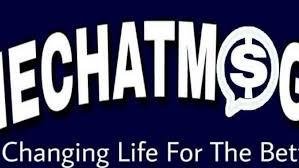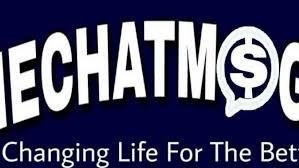Introduction: Unlock Your Janome Machine's True Potential
You have that perfect picture. It might be a beloved pet's face, a sleek company logo, or a child's simple drawing. You look at your Janome embroidery machine and think, "I wish I could stitch that out." For a long time, that wish felt like it required a magic key—a key that usually came in the form of expensive, professional-grade embroidery digitizing software that costs hundreds, sometimes thousands of dollars.
That barrier stops many creatives in their tracks. But what if you could create your own JEF files—the native format for Janome machines—without that huge investment? What if you could convert image to JEF file yourself and take matters into your own hands?
Good news: you can. The world of DIY digitizing has exploded, offering new ways to convert your images into stitchable designs. This guide will walk you through the why, the how, and the what-to-avoid when embarking on your DIY JEF file journey. Let's turn that image into thread.
What Exactly is a JEF File, Anyway?
Before we start converting, let's understand what we're creating. A JEF file (with the .jef extension) is not just an image file. Think of a JPEG or PNG as a painting—a flat set of colors and shapes.
A JEF file is more like a sophisticated set of instructions, a recipe for your embroidery machine. It tells the machine everything it needs to know:
-
Where to move the needle: Every single stitch is plotted with an X and Y coordinate.
-
What color thread to use: and, crucially, when to pause for a thread change.
-
The stitch type: Should it use a satin stitch for a smooth border, a fill stitch for large areas, or a running stitch for fine details?
-
The stitching order: Which section to stitch first, second, and last to create a clean, professional look.
This process of turning a simple image into this complex set of instructions is called digitizing. Professional digitizers are artists who understand how thread lays on fabric. While DIY methods can't fully replicate that expert touch, they can get you surprisingly far.
Why Professional Software is the Gold Standard (And Why You Might Not Need It Yet)
It's important to understand what the expensive software does so you can appreciate the limitations of DIY methods. Programs like Wilcom EmbroideryStudio or Hatch offer incredible control. A professional digitizer can:
-
Manually define the stitch path for every section.
-
Customize stitch density and length for different fabrics.
-
Add pull compensation to account for fabric distortion.
-
Create complex stitch effects and textures.
-
Perfectly clean up and smooth out artwork.
This level of control is essential for digitizing intricate logos or achieving perfect commercial quality. However, for personal projects, hobbies, and simple designs, this is often overkill. DIY methods are perfect for testing the waters before you dive into the deep end.
Your DIY Toolkit: Methods for Converting Images to JEF
You don't need a $1,000 software suite. You likely already have most of what you need. Here are the most common and effective DIY approaches.
Method 1: Online Conversion Services
This is the most popular and accessible starting point for most beginners. Several websites act as a "digitizing machine in the cloud."
How it works:
-
You upload your image (PNG, JPG, etc.) to the website.
-
You choose your target format (in this case, JEF for Janome).
-
You may have some basic options like specifying the desired size or number of colors.
-
The website's algorithm processes the image and converts it into an embroidery file.
-
You download the file, transfer it to your USB stick, and load it onto your Janome machine.
Popular Platforms: Sites like SewWhatPro, EmbroideryLibrary, and MyAppliOffer offer this service.
The Pros: It's incredibly fast, user-friendly, and requires no software installation or technical knowledge.
The Cons: You have less control over the final output. The algorithm makes all the decisions, which can sometimes lead to too many stitches, unnecessary color changes, or odd stitch directions. There is usually a per-design fee.
Method 2: Using Free and Affordable Software
A step up from online converters is using dedicated software that is either free or much more affordable than the professional suites.
Inkscape with an Extension: Inkscape is a powerful, free, open-source vector graphics editor. The game-changer is a free extension called Ink/Stitch. This add-on turns Inkscape into a basic digitizing program.
-
The Process: You use Inkscape to trace your image and create clean vector paths (the shapes that will become stitches). Then, Ink/Stitch allows you to assign stitch types (satin, fill) to those paths and generate the JEF file.
-
The Pros: It's completely free and offers much more control than an online converter. You learn the fundamentals of digitizing.
-
The Cons: There is a significant learning curve. You need to learn the basics of Inkscape first.
Affordable Dedicated Software: Programs like Embrilliance Essentials or MySewNet Luna offer a friendlier entry point than Ink/Stitch while still being far cheaper than high-end software. They often have automatic conversion features alongside manual editing tools.
Method 3: The Manual Trace Method (For the Purist)
This is the true DIY spirit but requires patience. You can use a simple program like Microsoft PowerPoint or Google Drawings to create shapes that approximate your image. You then save this as a PNG and run it through an online converter. This method gives you more control than just converting a photo directly, as you can simplify the design yourself first.
Choosing and Preparing Your Image for Success
The number one factor in getting a good DIY JEF file is starting with the right image. The better your input, the better your output.
The Perfect DIY Image:
-
Simple and Clear: Logos with bold outlines, high-contrast silhouettes, and simple shapes work best.
-
Limited Colors: The fewer colors, the better. This reduces thread changes and complexity.
-
No Fine Details or Gradients: Embroidery thread cannot replicate photo-realistic shading or tiny, intricate details. These will be lost or turn into a messy blob.
Pre-Conversion Prep Work:
-
Crop: Zoom in on the part of the image you actually want to stitch.
-
Increase Contrast: Use a simple photo editor on your phone or computer to make the blacks blacker and the whites whiter. This helps the conversion algorithm distinguish between shapes.
-
Simplify: If possible, remove any text or tiny elements that are too small to stitch.
Testing and Embroidering Your First DIY Design
Your first file is ready! But don't stitch it directly onto your favorite jacket. Embroidery is a permanent process.
Always do a test stitch-out. Every. Single. Time.
-
Use Scrap Fabric: Use the same type of fabric you plan to use for your final project.
-
Use Scrap Thread: Don't waste your expensive thread on a test.
-
Watch Closely: As it stitches, look for issues: Are there too many jumps? Is the thread breaking? Is the fill stitch looking messy?
-
Make Notes: You can often go back to your online converter or software, make small adjustments (like simplifying the design further), and try again.
Conclusion: Your Creative Journey Starts with a Single Stitch
Creating your own JEF files without professional software is not just possible; it's a fantastic way to expand your embroidery skills and personalize your projects in a whole new way. While the results may not always be perfect, the satisfaction of embroidering a design you created from scratch is immense.
Start with a simple, high-contrast image. Choose an online converter for your first attempt to keep things easy. Manage your expectations, always test on scrap fabric, and most importantly, have fun with it. This DIY approach demolishes the biggest barrier to machine embroidery, putting limitless creativity directly in your hands. Your Janome machine is waiting—what will you create?



